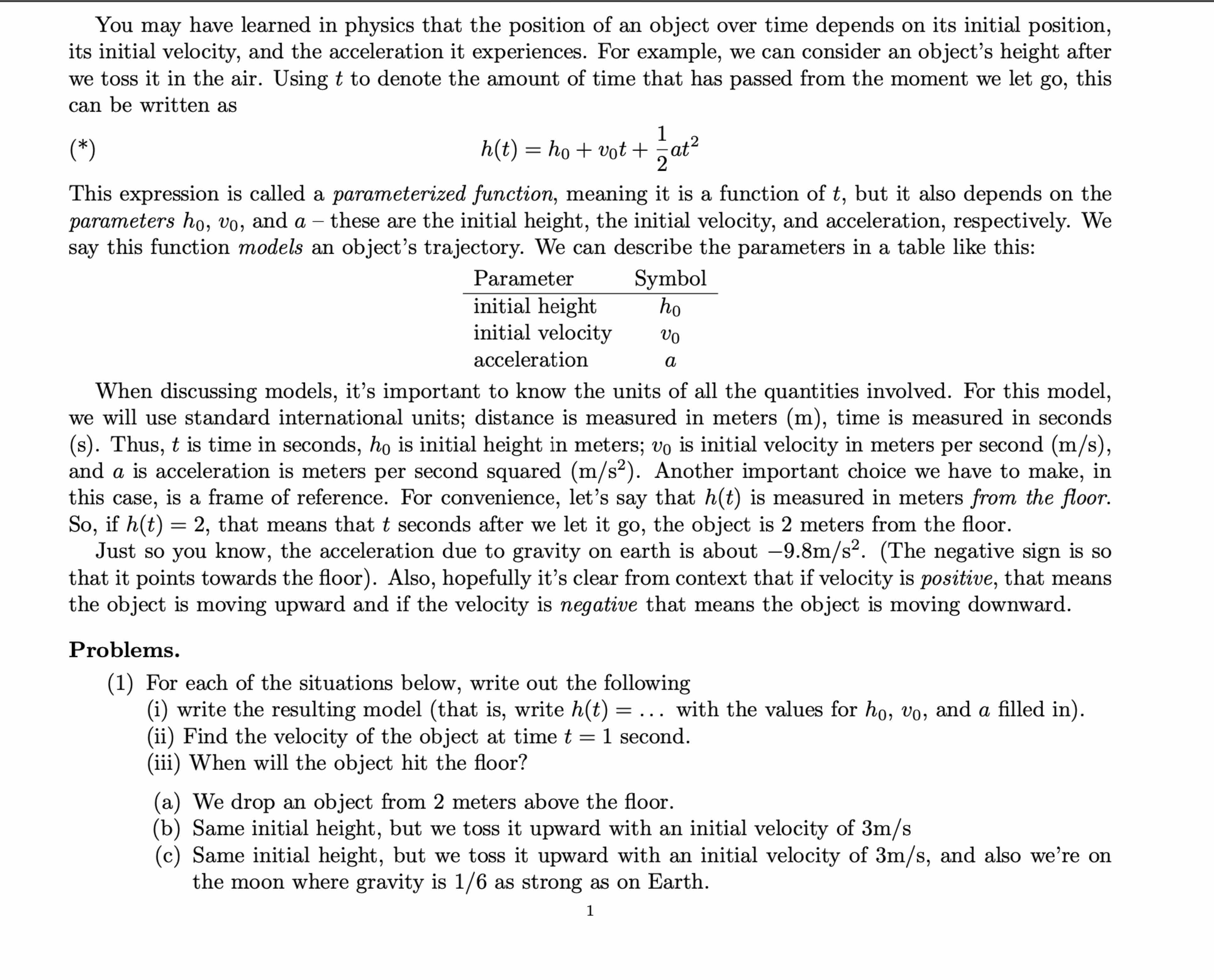Answered step by step
Verified Expert Solution
Question
1 Approved Answer
You may have learned in physics that the position of an object over time depends on its initial position, its initial velocity, and the

You may have learned in physics that the position of an object over time depends on its initial position, its initial velocity, and the acceleration it experiences. For example, we can consider an object's height after we toss it in the air. Using t to denote the amount of time that has passed from the moment we let go, this can be written as (*) 1 h(t) = ho + vot + - at This expression is called a parameterized function, meaning it is a function of t, but it also depends on the parameters ho, vo, and a these are the initial height, the initial velocity, and acceleration, respectively. We say this function models an object's trajectory. We can describe the parameters in a table like this: - Parameter initial height initial velocity acceleration Symbol ho vo a When discussing models, it's important to know the units of all the quantities involved. For this model, we will use standard international units; distance is measured in meters (m), time is measured in seconds (s). Thus, t is time in seconds, h is initial height in meters; vo is initial velocity in meters per second (m/s), and a is acceleration is meters per second squared (m/s). Another important choice we have to make, in this case, is a frame of reference. For convenience, let's say that h(t) is measured in meters from the floor. So, if h(t) = 2, that means that t seconds after we let it go, the object is 2 meters from the floor. Just so you know, the acceleration due to gravity on earth is about -9.8m/s. (The negative sign is so that it points towards the floor). Also, hopefully it's clear from context that if velocity is positive, that means the object is moving upward and if the velocity is negative that means the object is moving downward. Problems. (1) For each of the situations below, write out the following (i) write the resulting model (that is, write h(t) = ... with the values for ho, vo, and a filled in). (ii) Find the velocity of the object at time t = 1 second. (iii) When will the object hit the floor? (a) We drop an object from 2 meters above the floor. (b) Same initial height, but we toss it upward with an initial velocity of 3m/s (c) Same initial height, but we toss it upward with an initial velocity of 3m/s, and also we're on the moon where gravity is 1/6 as strong as on Earth. 1
Step by Step Solution
There are 3 Steps involved in it
Step: 1

Get Instant Access to Expert-Tailored Solutions
See step-by-step solutions with expert insights and AI powered tools for academic success
Step: 2

Step: 3

Ace Your Homework with AI
Get the answers you need in no time with our AI-driven, step-by-step assistance
Get Started


